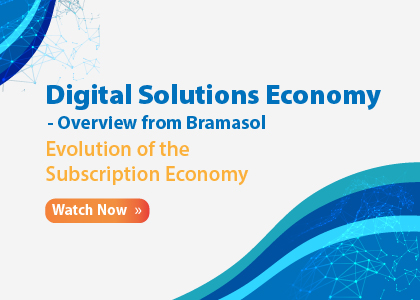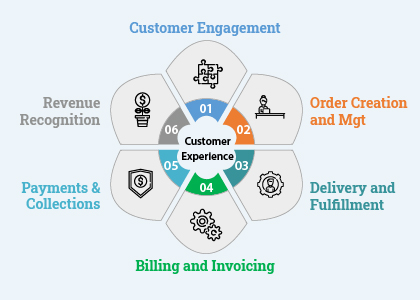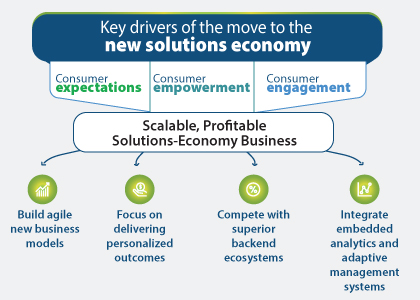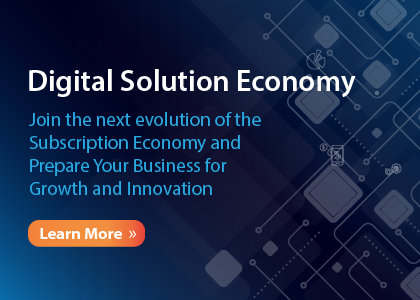John Froelich: And if you think about it, there are lots of different services that you can have. My lawn service is an example of a subscription service, right? I pay a monthly fee and a guy shows up every two weeks to work on my lawn. So that’s an examples of services, or those services can be security services, maintenance services, all kinds of different things. And then finally this idea, and I think people don’t understand the idea of privilege, so your gym membership might be an example of a privilege. You have the privilege of going to the gym. Peloton is an example of something that’s more of a privilege. You buy the bike, but then you pay a subscription to have the privilege of getting up and sweating to death with your favorite individual.
John Froelich: But there’s more than that. We talk about xASS, which is “something as a service”. And so many companies are offering these., We think of software as a service, but you can think of anything as a service from a technology perspective. Of course, we have infrastructure as a service. We have platform as a service. SAP, through its new RISE program, has business transformation as a service. But that’s something that you pay only as you use, right? But it also included with five other areas.
John Froelich: I’m sure that the world will continue to evolve with entitlements. For example, I’m a gamer. I also love classical music and music content. So I sign up monthly for Apple Music, and that gives me entitlements to download or take content. The same thing is true of games or digital content. You know, if you’re a McAfee or or Adobe, and you’re selling software, you have to understand from the package what entitlements does that individual have with their license? And how do you manage that? Right? You have dynamic pricing models. We all know commodities, but real dynamic pricing models, airfares or hotels now with hotels.com or priceline.com. Many other companies are providing dynamic pricing models based on levels of subscriptions or usage. We have outcome-based models based on an outcome. If you think of Hewlett Packard, or even companies like Lexmark who offer printers, they do those as an outcomes. You pay for the number of pages printed, not necessarily the value of that printer. We have usage and consumption based models. Those are more the kinds of models where you pay upfront and you use it up. Your classic teleco is an example of that.
John Froelich: But you can have plenty of other usage models out there, for things as sophisticated as a rail cars, where you buy, some mileage, and interestingly enough, insurance companies and others are moving to that kind of a usage base. So usage consumption is just the same thing. Only, you don’t pay up front, you pay in arrears, you consume it and then you pay for it.
John Froelich: And finally, something we’re seeing coming up in these partnerships is revenue sharing models. So imagine a large warehouse company that offers warehouse services has a revenue sharing model where they not only make available to you the space in the warehouse. But they have a revenue sharing where they have an organization who manages that warehouse, or does the on the ground work for you. They might provide forklifts and other kinds of material movement equipment. And it’s a revenue sharing model in which they provide a bundle, but they share that revenue across a bigger thing. So point being, it’s not just about subscriptions. This is a move to where there are many different ways to engage. So with this heightened engagement, we’re moving to more of a customer driven model.
Jim Hunt: I’m glad you mentioned “customer driven” because that seems to be, from our previous discussions, one of the big changes with the Digital Solutions Economy, is the customers are now in charge. And they want it the way they want it and to be successful companies, no matter which of those six or so different types of models or mix of models they are offering, companies need to have the flexibility in the backend behind the scenes to manage everything like compliance and accounting and so on, but still give the customer that the perception and make it true that they’re in charge.
John Froelich: You know, that’s a great point. And maybe we divide this up into two pieces. Let’s talk about the customer driven model itself. We’ve thought a lot about this. Bramasol brings fifteen plus years of experience working with companies, where our heritage has been in revenue accounting and in transformation for companies to take advantage of SAP. And what we’ve seen is more and more of them moving to this new Digital Solutions Economy type models. What we’ve learned is while engaging with them, we also learn more about what their customers want. And what we’re seeing in the marketplace, whether you look at Bain or McKinsey, or the Big Four, lots of different surveys out there, we’ve thought about it in five or six different categories.
The first one is customer engagement. The customer wants a model where they can engage with you on their own terms, whether it’s through whatever device they want, whatever time they want, anonymously or recognized. And once they’ve engaged, they’ve want to learn about what they can buy and they want to be in charge, Jim, as you so well said of the bundles. Personally, I know that I can’t stand the fact that that Comcast dictates to me what bundle I can get. I want to go on and choose the channels I want. And wouldn’t it be super cool if I could do that every month, and have an opportunity to change the mix of channels that I wanted, because I wanted to watch different things, and then be able to set that up, order that, and then have that flow directly into the billing and invoicing. As a customer, I don’t want to receive a million different bills. I want one bill, and I want you to show me what I bought, what I got, any credits that I might have for some special deals, but I want it all in one place. I don’t want your system problems to dictate how I get a bill.
Jim Hunt: Yeah. And, if I can interject a note on that, we hear this term “disruption” a lot in the marketplaces. Like you mentioned Comcast, they’re going to get disrupted, they’re already getting disrupted by over-the-top streaming services that are trying to satisfy those desires of the customers. So the old guard companies, if they don’t move, they’re going to get disrupted and maybe go out of business.
John Froelich: Yeah. And, you know, um, we can talk about that in another podcast. We’ll talk about disruption in some areas. I think that’s a great point because you have people like my kids who do streaming, and traditionally we think of streaming services like Hulu, right. But my daughter and son subscribed to something called Crunchroll. They are anime fans and that’s the content they want. So they will subscribe to that service for a period of time while they binge watch the six or seven shows they want to binge watch. And then they’re done with that. Right. So it’s a different disruptive model. Now of course you have this issue of, okay, well, how do I fulfill and deliver all of that? Customers want it when they want it and how they want it.
John Froelich: I know that if I go online for a service, as simple as Chewy, right, who does pet food. I order the pet food for my family, my mom’s family, my sister’s family, just because we have a joint account, where you get discounts, but I want the food sent to different locations. And I want the timing to be the timing I want, not the timing you have. And so how do you manage that process? And when it comes to electronic fulfillment, it becomes even more challenging. As I mentioned companies like Adobe, but think of gaming companies where you buy something all upfront, you pay for the game-of-the-year edition, or some special edition, and then you have entitlements to either buy at a discount or get free content as it becomes available. How do you manage all of that?
John Froelich: Then there’s payments and collections. I want to be able to pay how I want, right. Do I want to pay monthly? Do I want to pay quarterly? Do I want to pay all upfront for a discount? If I pay cash, do I get something different than if I do it through an ACH or a credit card? And we’re also seeing a lot more people wanting to use things like PayPal or ePay or other tools that are out there, or Apple Pay or all of that. How am I enabling that and giving them flexible terms. And finally, companies need to make sure that you’re taking care of the taxes all the other issues. That’s not a thing for the customer. They don’t care. Don’t bring it up to me. Don’t care, don’t care. It’s not my thing. So again, Jim, customers want to be in control of the circle or in control of all of the aspects, but they also want you to respond to them and provide the information they want and need.
Jim Hunt: Okay. And as you said, they want that all to be transparent. They don’t want to hear about your accounting issues or compliance issues or anything. It’s all in the background and that should be transparent. They just want what they want ,when they want it, how they want it, and they want to pay for it the way they want to pay for it.
John Froelich: Exactly. To the second part of your question, so what the heck does that mean for companies that might be listening to this and thinking about this? So we’ve set it up again to mirror that process of the customer engagement model that we believe is six aspects. We’ve thought about this from six different perspectives. And we came at this because of our deep background in revenue, accounting, treasury, and leasing, and all of those relate very clearly to the order creation & management and delivery & fulfillment — and to an increasing extent customer engagement. So I’ll walk through and that same circle or approach again, which is starting with customer engagement. As a company, you need a highly flexible customer driven model, not a highly flexible you driven model. You need it to be more flexible to react to what’s in the marketplace and give your customers that flexibility.
John Froelich: Of course, we love it if you’re on the SAP Intelligent Enterprise, with SAP S/4HANA, because we believe that it’s the power of S/4HANA that really allows you this flexibility. So for example, you can choose multiple engagement models with customers. Whether you choose to use an SAP tool as SAPC or any of those CRM tools. But if you choose to use another tool like Salesforce.com, that’s okay. We can work with that. And when you’re engaging, you want to link it to the order creation & management and use various tools from SAP, whether it’s a solution order management, SAP CPQ, (configure price, quote), SAP, CLM tools, SD, or again, other tools that might be out there for price quotes and integrating that with your delivery and fulfillment.
John Froelich: You want all that integrated to have a unified view of your customer that then feeds your billing and invoicing systems and SAP FICO or convergent, invoicing and billing that can bring together multiple billing systems. What we’re finding is many customers who come to the table have proprietary systems that they’ve built for all of these. I know when I was at AT&T we had proprietary systems. That was part of the value we brought to the table with a hundred and some odd years of insights. We had some value to that equation. So you had to kind of integrate into that. Hand-in-hand with billing and invoicing comes your payments and collections, and with SAP’s treasury solutions, now we have deep, deep expertise in how you link and support all of this from an AR/AP perspective and ensure that you’re lowering your day’s sales outstanding and your day’s inventory.
John Froelich: How do you integrate it into your financial reporting and manage your cash? Because it has a huge impact on cash management, right? And finally, we all know that we need to be compliant. Compliance can be anything from standard revenue accounting, which is ASC 606 revenue recognition, but there’s a lot else out. There is GRC governance, risk and compliance to ensure you’re not being hacked; that the data not only for you is secure, but the data for your customers is secure. And that’s something I should have mentioned, Jim, in the beginning, the other thing is customers want a secure interface with you. So we need to make sure that we manage that too. And then there’s core security workflow. How do you make sure you have segregation of duties and all of that? And the beauty is SAP provides all of this. We bring a perspective and deep expertise to that along with an ability to help you using RISE to move quickly to the SAP platform, uh, as well as great tools such as SAP Fiori and the built-in analytics from SAP analytics cloud, plus our tools to provide you the insights that you can take action on each of these
Jim Hunt: That is a great overview. We only have a couple more minutes left in today’s session, but I’d like to get your take on how companies that are listening now that know they want to get into Digital Solutions Economy, just from an overview standpoint, how should companies get started? How should they engage with Bramasol to understand where they are and kind of map out the path forward?
John Froelich: Jim, what we recommend is the first thing is to do is to step back and think about the fact that the digital solutions economy is here. It’s not going away. It’s not a fad created by COVID-19. It is a fundamental change in the way you will have to engage with your customers. So the first thing is understand that it’s here, understand that there’s an impact to you.
Next is get with a partner like Bramasol, or a partner who has expertise in this space, and start thinking about different customer models, whether you choose to do it holistically and approach this as all one thing, or you can divide it up. And in future podcasts and other areas, we’ll talk about different approaches companies have taken, to just picking on individual components of this. Maybe you want to improve the ability to put offers out in the marketplace more quickly, and therefore you need a way to link your order creation and management together with your revenue accounting, to ensure that you can reduce the amount of time to market in that space. So recommendation number one is Digital Solutions Economy here to stay, not going to go away.
John Froelich: So figure out how you need to engage with a partner like Bramasol, who has thought leadership and has deep experience in this space, and then get your core team together and take little bites, take chunks, take pieces, and, and, and, you know, work on that as you begin to improve your model.
Jim Hunt: That was great. John I’ll make sure that on the transcript page for this podcast, I include some of the links to the deeper resources and other aspects. So people can get a broader view. This has been great. I’m sure we’re going to talk more about the digital solution in the future, but thanks very much for your time today.
John Froelich: My pleasure, Jim, my pleasure. Thanks.





